3DPrint.com | The Voice of 3D Printing / Additive Manufacturing |
- Foxconn to Develop Binder Jet Metal 3D Printing with Triditive
- State of Massachusetts Awards $1.5M to 6K for Metal 3D Printing Powder
- NIST Backs New Resin 3D Printing Research Group
- NASA’s Artemis Thruster Redesigned with 3D Printing
- US Army to 3D Print New Barracks in Texas with ICON
| Foxconn to Develop Binder Jet Metal 3D Printing with Triditive Posted: 11 Apr 2022 07:35 AM PDT Spanish startup Triditive will, according to 3D Printing Media Network, be partnering with Taiwanese electronics giant Foxconn to develop a new metal binder jetting technology. Foxconn, of course, is one of the world's largest electronics manufacturing services companies, producing everything from Apple's iPad to Amazon's Kindle, to almost all current Nintendo consoles. Despite its Taiwanese headquarters, the company is the People's Republic of China's largest private employer. It has also been frequently maligned for over a decade, due to the labor conditions reported in many of its factories. Probably the most notorious incident involving Foxconn was a series of suicides by workers in 2010, many of which occurred at the company's industrial park in the city of Shenzhen, often referred to as "China's Silicon Valley". While it is known to use additive manufacturing (AM) for prototyping, this is apparently the first time that news has broken of Foxconn's developing its own AM technology. Triditive's AMCELL 8300 printer is noteworthy for being, as the company puts it, "The first and only large 3D printer solution able to mass-produce parts in metals and polymers.” The machine is highly automated for high-throughput production. This means automatic calibration, as well as loading and unloading of build platforms, and a conveyor belt for ejecting completed prints into a storage system. Although Triditive specializes in bound metal (and polymer) extrusion machines, bound metal extrusion and metal binder jetting yield parts according to somewhat similar principles. Both processes produce components that need to be finished by being sintered in a furnace. The difference is that, whereas extrusion printers use filaments containing metal particles, binder jetting systems deposit liquid binders onto beds of powders — including metals — to join the latter materials together, layer-by-layer. Generally, the difference in technique makes extrusion printers more ideal for desktop applications and prototyping. Binder jetting, on the other hand, is better-suited for larger-scale and series production. However, the fact that Triditive has been successful in developing systems capable of mass-producing metal parts with extrusion means that the company has a handle on performing the sintering phase on a large scale, which may be what makes the company an attractive partner from Foxconn's perspective. Triditive will work with Tecnalia, an R&D organization also located in Spain, and the renowned German Fraunhofer Society, to develop binders for the new system. It’s also worth noting that Triditive is backed by Stanley Black & Decker, which has steadily been increasing its presence in the AM industry. Little is still known about the collaboration, yet it's easy to speculate that Foxconn could eventually use AM to automate at least some minimal though significant chunk of its enormous output commitments. (3DPrint.com's Michael Molitch-Hou has already been speculating on similar topics for some time.) But the timeline, as anyone who follows 3D printing news knows, is everything. While we're presumably still very far away from Foxconn mass-producing iPhones with 3D printers, it will be interesting to see how quickly this particular project develops, and how long it takes before Foxconn — or one of its major partners or competitors — makes more news involving 3D printing. Images courtesy of Triditive The post Foxconn to Develop Binder Jet Metal 3D Printing with Triditive appeared first on 3DPrint.com | The Voice of 3D Printing / Additive Manufacturing. |
| State of Massachusetts Awards $1.5M to 6K for Metal 3D Printing Powder Posted: 11 Apr 2022 06:30 AM PDT Massachusetts Governor Charlie Baker and Lt. Governor Karyn Polito have awarded $1.5 million to 6K, the company behind the UniMelt microwave plasma platform that produces unique additive manufacturing (AM) powders. The grant will fund high-tech equipment to recycle scrap materials used in AM and battery production for electric vehicles, grid storage, and consumer electronics. In the last few years, 6K has raised millions of dollars in funding, partnered with plenty of companies to create AM powders, appointed high-profile members to its board (including politician Joe Kennedy III), and launched new facilities. By all means, the company is expanding at a robust pace, and the latest grant will push its mission even further. Just a year ago, it revealed its new 33,000 square feet battery material production facility, one of the largest battery material production facilities in the United States. Over the following years, 6K is set to invest $25 million into this Center of Excellence that will focus on developing new sustainable battery materials for energy storage devices. Determined to develop materials into products that will advance industries in manufacturing, renewable energy, aerospace, and consumer electronics, the successful startup has raised a total of $94.9 million in funding over seven rounds, including a Series C $51 million investment led by V.C. firm Volta Energy Technologies. State grants help companies expandAnnounced by Polito and Housing and Economic Development Secretary Mike Kennealy during an event at 6K's new battery material production facility, the new grant highlights the strong in-state supply chain. Mainly because it will fund the purchase of one new UniMelt system, which is designed by 6K, and will be manufactured by Helfrich Brothers Boiler Works in Lawrence with components from Middlesex-based industrial equipment supplier AVS. The new UniMelt system will be used to produce metal powders, creating new opportunities to develop 6K's future workforce in collaboration with local vocational schools, community colleges, and universities. Originally built as a sustainable materials production platform, the patented UniMelt technology is expected to enable the development of advanced materials across a broad spectrum of markets, from 3D printing to lithium-ion batteries. The new unit will join others in the company's latest facility, expanding production capacity. 6K's cutting-edge UniMelt tech is described as "quintessentially Massachusetts" in terms of its innovative, sustainable, and environmentally-friendly characteristics, which recycles scrap materials or used metal powder or parts that would otherwise have gone to landfills, and instead, transform them into premium metal powder used in 3D printing for the production parts. The $1.5 million grant comes from the Massachusetts Manufacturing Innovation Initiative (M2I2) program, managed by the Center for Advanced Manufacturing (CAM) at the MassTech Collaborative and the Executive Office of Housing and Economic Development. Aiming to foster and grow sectors such as AM, the M2I2 program has invested over $80 million in direct grants to growing companies, universities, and research labs across the state. Some of the previous recipients include Specialty Materials, a Lowell-based manufacturer of Boron and silicon carbide fiber products; Sheaumann Laser, a Marlborough company specializing in designing and manufacturing semiconductor lasers modules; and the University of Massachusetts Amherst. As its latest recipient, 6K "will help unlock the potential of the high-value metals and materials left unused in discarded stockpiles," suggests MassTech Collaborative's Chief Investment Strategist Ben Linville-Engler.
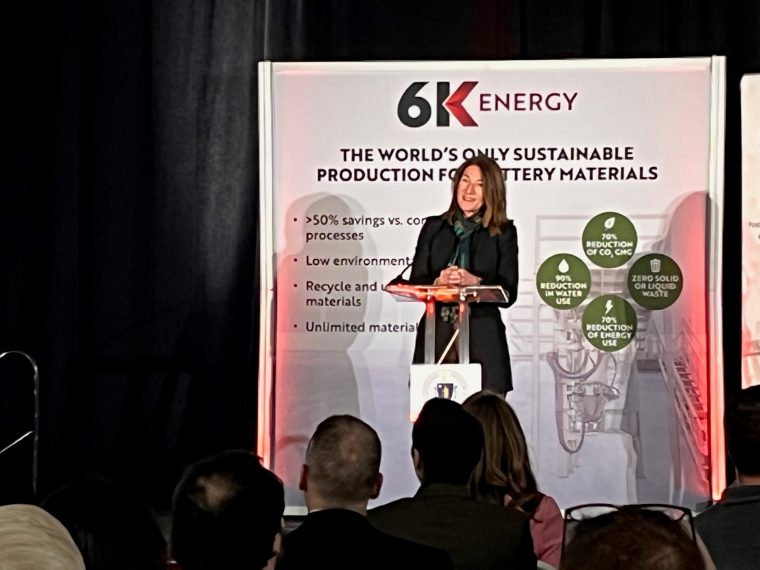 Massachusetts Lt. Governor Karyn Polito awarded 6K a $1.5 million grant. Image courtesy of 6K/Incus. The grant comes as no surprise, considering that Governor Baker had already highlighted 6K as a standout company during his testimony to the Joint Committee on Telecommunications, Utilities & Energy in January 2022. At the time, Baker noted the "incredible, innovative work" that 6K was doing in the battery supply chain. With the new grant announcement, two words were heavily highlighted by state representatives: jobs and infrastructure. In fact, through the M2I2 targeted investments, the state plans to expand its manufacturing base, support innovations in sustainable energy technology, and attract the multitude of students that study STEM careers (a number that in Massachusetts is one-third higher than the U.S. average)
US-leading state in 3D printingAdditionally, the investment is expected to position Massachusetts as a leader in the clean production of these materials, installing a cost-competitive solution to traditional material manufacturing methods, which take longer and produce more pollutants and waste (including water). For example, the company claims its UniMelt system makes the material in two to three seconds with no hazardous waste, reducing water usage six times and reducing power use and carbon dioxide emissions. Local government and politicians stepped out for the announcement, followed by a tour of 6K's proprietary UniMelt advanced production plasma systems. State House Representatives Christina Minicucci, Tram Nguyen, and Jeffrey N. Roy were among the state officials present and indicated they were "excited for the potential that this grant unlocks."
Similarly, State Senator Diana DiZoglio highlighted that 6K's innovative technology has created sorely needed jobs in the Merrimack Valley and bolstered efforts to reduce wastewater, greenhouse gas emissions, and energy use. She promises that this investment will go a long way to supporting the scale-up and success of cutting-edge technology, positioning Massachusetts to lead the way in this emerging industry. During the ceremony, it was clear that government officials are eager to see additional programs like the M2I2 passed by state legislators. If that happens, they could offer foundational support to other Massachusetts-based startups, including many AM companies that could follow in the steps of highly successful local predecessors, like Markforged and Formlabs. Massachusets is one of the states leading the 3D printing revolution in the U.S. With such a hotbed of universities and institutions; it has the potential to spinout, found, and expand many firms that could lead the charge in AM innovation. The post State of Massachusetts Awards $1.5M to 6K for Metal 3D Printing Powder appeared first on 3DPrint.com | The Voice of 3D Printing / Additive Manufacturing. |
| NIST Backs New Resin 3D Printing Research Group Posted: 11 Apr 2022 06:00 AM PDT While the additive manufacturing (AM) industry itself is still establishing its own standards and research bodies as a whole, we're already seeing the formation of niche organizations within the sector. Among the first is the Photopolymer Additive Manufacturing Alliance (PAMA), which has just announced its formal launch. Working with the U.S. Department of Commerce's National Institute of Standards and Technology (NIST), as well as ultraviolet and electron beam trade group RadTech, PAMA is dedicated to advancing research and technology in 3D printing. The organization notes that photopolymer AM is already popular in a number of industries and has a great deal of potential for many more. Current sectors highlighted include jewelry, dentistry, eyewear and sporting goods, while PAMA suggests that personalized medicine and space 3D printing could yield future use of photopolymer processes. However, progress in the field is being held back by a combination of false marketing claims and the need for unified standards across the field.
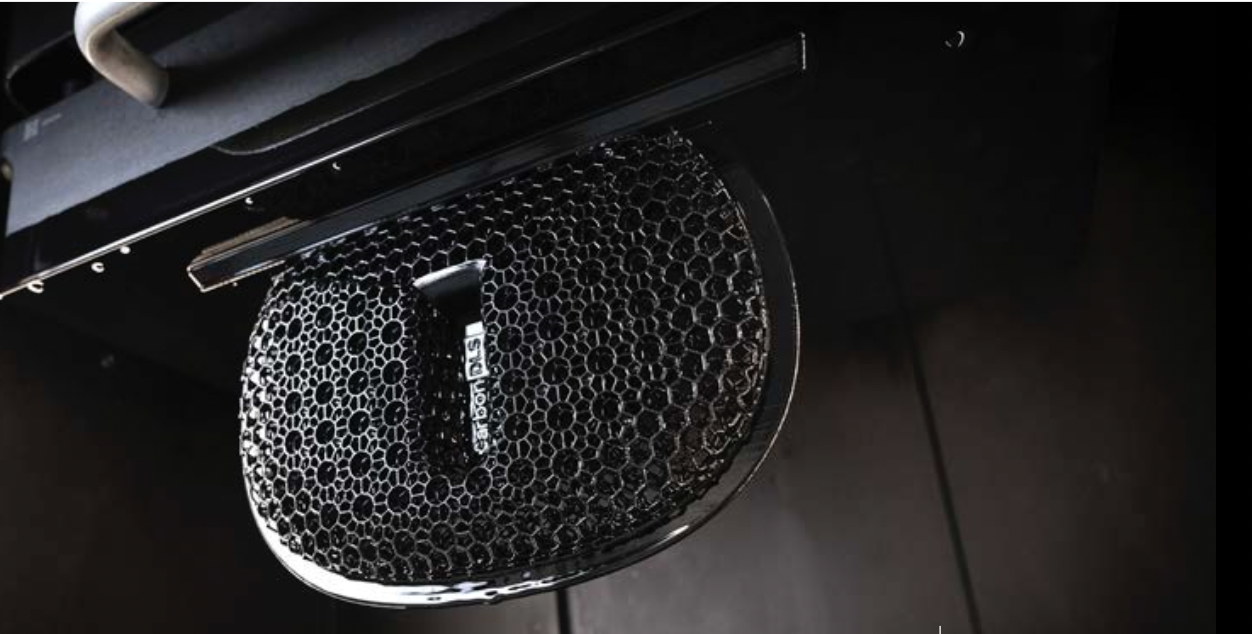 A 3D printed lumbar support piece for Osprey’s new line of backpacks, made using Carbon 3D printers. Image courtesy of Carbon. PAMA has already established commitments from "critical institutions and end-users" and is in the process of accepting new members. It will kick off its operations with activities at RadTech 2022, May 9 – 12 in Orlando, Florida. These include a PAMA lunch at the event to discuss the structure and future activities of the group. Almost 24 technical presentations will be given that discuss photopolymer 3D printing, with topics ranging from optimizing materials, molecular design, and "next level formulation" to a special PAMA market overview. Stephanie Benight, from Tactile Material Solutions, will provide an exclusive update titled The Tactile Report Overview: Photopolymer Additive Manufacturing Market Trends and Companies to Watch. There will also be a short course on photopolymer additive manufacturing led by Walker and Dr. Jason P Killgore of NIST. PAMA will also be involved in a panel at the show titled "Future of Additive Manufacturing Materials." This will include Maximilian Zieringer, Materials Lead at Formlabs; Charlie Wood, Senior Director of Research & Development at Fast Radius; Vince Anewenter, Director – RPC Consortium Milwaukee School of Engineering; Eric Pallarés García, Co-founder & CTO, BCN3D Technologies. And a RadLaunch class of 2022 will be introduced that will feature volumetric 3D printed dental aligners; custom 3D Printed boli for cancer patient radiation therapy; "disappearing" advanced 4D materials; and high-performance battery components.
As David Walker pointed out in an interview, photopolymers yield huge potential for manufacturing. Though often toxic and environmentally unfriendly, these photosensitive thermosets are now achieving material properties on par with thermoplastics in many cases. They represent the majority of hearing aids on the market and Carbon is now seeing them get into many more consumer products. However, to achieve the safety and efficacy of the plastics we're used to in our everyday lives, photopolymers will surely need a concerted effort behind them. This is particularly true if we want to see commercially viable bio-based photopolymers made possible. And because AM is only now beginning to take off as an end part production method, now is the chance to guide this segment in the right direction. While we already have standards organizations, such as ASTM International, that are developing standards related to the AM as a whole, this may be among the first focused specifically on a material within the industry. Rather than cover one form of photopolymerization, such as SLA or DLP, it is dedicating itself to the resins themselves. This indicates that we've reached a point in the sector where niche groups are forming dedicated to their own specialties. The post NIST Backs New Resin 3D Printing Research Group appeared first on 3DPrint.com | The Voice of 3D Printing / Additive Manufacturing. |
| NASA’s Artemis Thruster Redesigned with 3D Printing Posted: 11 Apr 2022 05:30 AM PDT As NASA pushes forward on at its Artemis missions to return to the moon, Aerojet Rocketdyne turned to VELO3D and nTolpology to redesign a 60 year old manifold for a thruster for the project. Using additive manufacturing (AM), the team hoped to drive down production costs and speed up development, all while improving the performance of the component.
The R4D component being resigned is a crucial part of a vehicle’s reaction control system (RCS), which manages the orientation of the craft. The RCS can be fired, usually briefly, in any direction, to change the direction of rotation of the craft. With this control, the vehicle can be directed up or down (pitch), laterally around its main axis (roll), or left or right (yaw). The R4D keeps the craft maneuverable, managing its direction and position. Originally created for the Apollo missions, the element was redesigned with AM in mind to be more efficient. The Aerojet Rocketdyne team wanted to make the thrusters more reliable, reduce overall part count, make them easier to assemble and service, and, of course, reduce their weight.
Typically, we can see that these goals are recurring in the commercial and governmental space markets. Weight reduces the launch costs of a component, while also allowing more kit to be placed on a craft, and possibly lengthening its range or capabilities. Ease-of-assembly reduces costs considerably, especially since assembly times and schedules are often delayed or compressed, which could delay the mission. Assembly costs are additionally elevated because the work has to be performed by highly trained staff in cleanroom environments. However, these costs pale in comparison to service costs. A spacewalk is an expensive endeavor and any time spent fixing this engine would at least interrupt and perhaps even render a mission useless. A reduction in part count makes it easier for a company to iterate new designs. It also means that a lot less tooling will have to be made. This significantly reduces the time to develop the craft and reduces costs as well. Fewer parts means fewer processes and process steps, as well as fewer interdependencies between parts and materials. As long as the 3D printing steps are well under control, it may be easier to reach OE targets. It does mean concentrating the risk more on 3D printing as a technology, but it could mean fewer unanticipated failures resulting from the interaction of solvents, fasteners, welds, glues, and other materials.
The Aerojet team turned to nTopology to redesign the part to save weight and reduce parts. On top of performing topology optimization, the team also wanted to optimize for 3D printing through reduction of the supports and support material needed. The optimized part contained lattices to save weight, while enhancing stiffness.
Printed in titanium on a VELO3D machine, the final part had a mass reduction of 50 percent at a third of the cost of a conventionally manufactured component. The RCS is currently being refined and they hope to get it on board future Artemis missions to the moon and beyond. The post NASA’s Artemis Thruster Redesigned with 3D Printing appeared first on 3DPrint.com | The Voice of 3D Printing / Additive Manufacturing. |
| US Army to 3D Print New Barracks in Texas with ICON Posted: 11 Apr 2022 05:00 AM PDT Last year, 3D printing construction company ICON partnered with the Texas Military Department to design and print a 3,800 square feet training barracks at the Camp Swift Training Center in Bastrop, Texas. Constructed using ICON's Vulcan system, the structure fits 72 soldiers and is the largest 3D printed building in North America. It won't be the largest for much longer, however. ICON is now collaborating with the U.S. Army's Installation Management Command (IMCOM) to build three structures at Texas's Fort Bliss, each of which will be 5,700 square feet upon completion. The new build is a continuation of the Defense Innovation Unit’s (DIU's) Constructive Scale Additive Manufacturing (CSAM) project, which had its first demonstration in 2020 in a joint effort by ICON and the U.S. Marines to build a vehicle hide structure at California's Camp Pendleton. 
ICON's VP of public sector, Brendan O' Donoghue, also added that there is currently a multi-billion dollar backlog of housing that directly impacts the nation's military personnel.
Aside from setting the new record for North America's largest 3D printed buildings, the barracks at Fort Bliss will also be the first structures printed in compliance with the Pentagon's Unified Facilities Criteria (UFC) for the design and construction of 3D printed concrete structures (which the document refers to as "additive construction"). Notably, the guidelines were established last September 30th, about a month after ICON completed the barracks at Camp Swift. This timing provides valuable insight into the direct relationship between these projects and the development of regulatory apparatuses related to the industries involved.
Interestingly, precisely this U.S. Army Corp of Engineers document and any future updated versions of it, along with the series of DIU/ICON projects, will be primarily responsible for solving the problems it just stated. With little else being out there at present in terms of additive construction regulatory regimes, the rest of the industry will likely yield to the regulations created by the military. This is especially true considering the size of the projects it's able to undertake, which among other things, serve as helpful trial balloons for the regulations the military enacts. In effect, to whatever extent that additive construction solidifies as the future of the homebuilding industry, the U.S. military will more or less be the entity creating the nation's next set of building codes. And to give a rough estimate of the industry's current state, it's worth noting that, at least in the United States, there have been various examples representing significant forward momentum, even just since the UFC document was published last September. The post US Army to 3D Print New Barracks in Texas with ICON appeared first on 3DPrint.com | The Voice of 3D Printing / Additive Manufacturing. |
| You are subscribed to email updates from 3DPrint.com | The Voice of 3D Printing / Additive Manufacturing. To stop receiving these emails, you may unsubscribe now. | Email delivery powered by Google |
| Google, 1600 Amphitheatre Parkway, Mountain View, CA 94043, United States | |

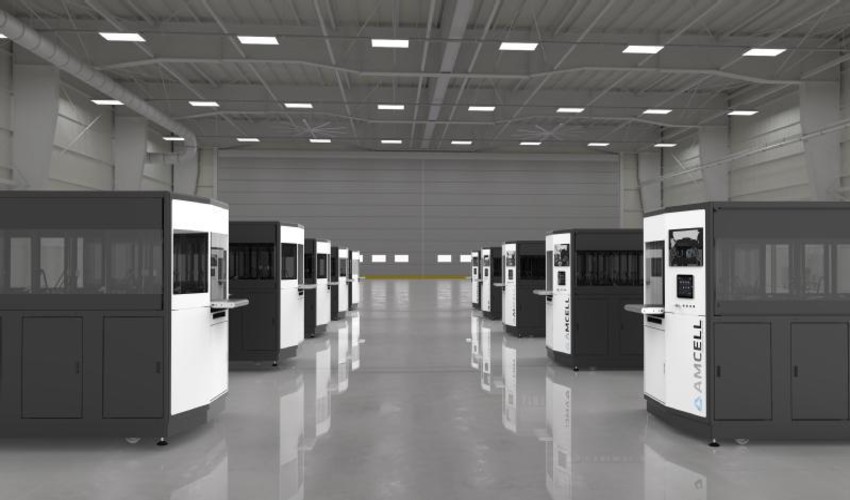


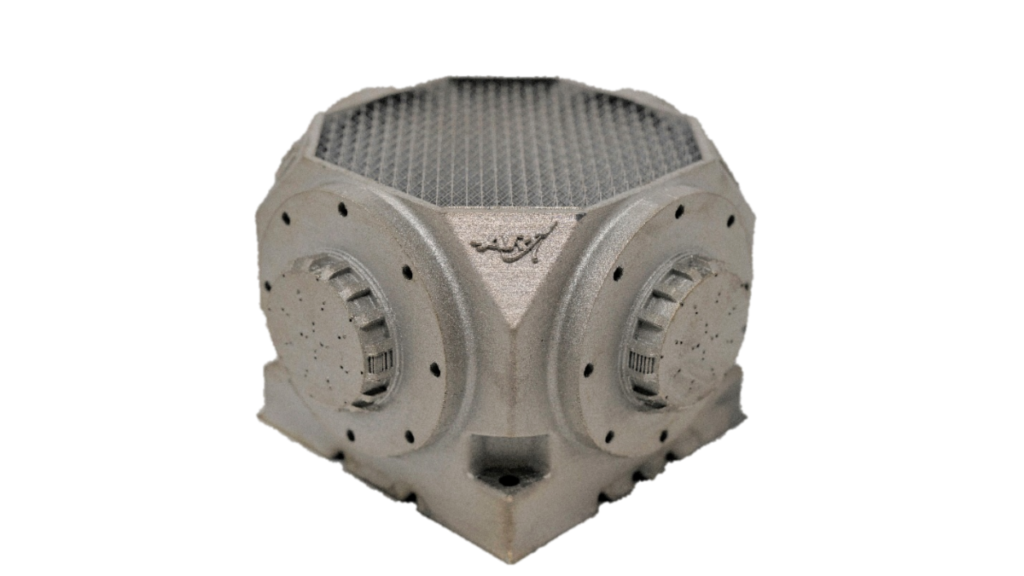

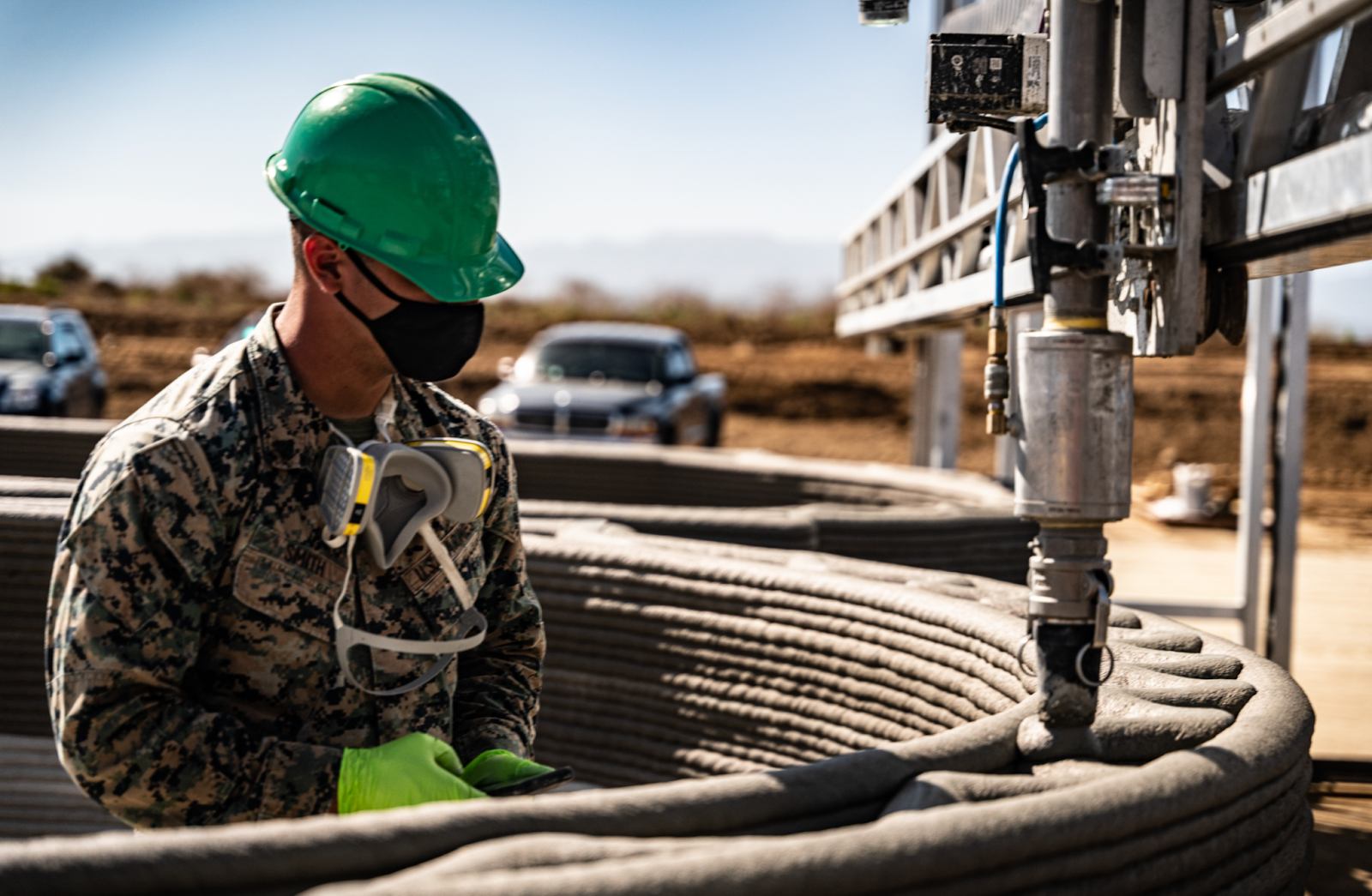
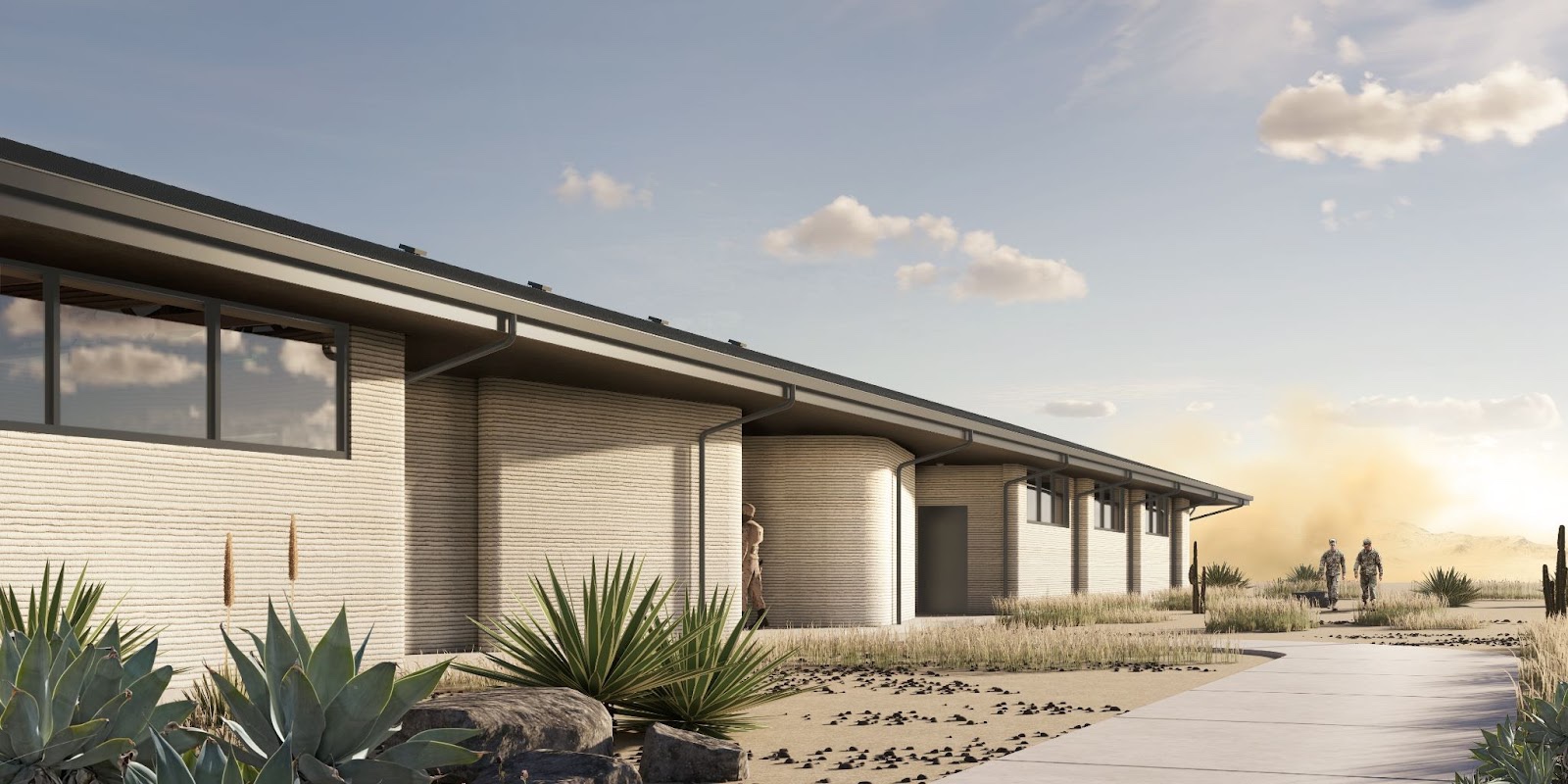

0 comments:
Post a Comment